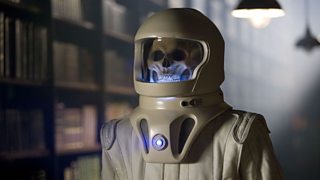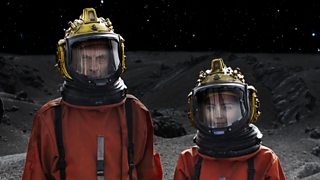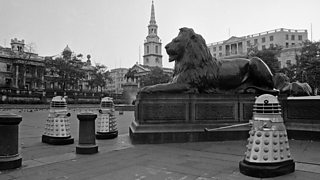In the Forest of the Night: Fact File
The read through for the episode took place on Friday, 18 July, 2014. Shooting began on Tuesday, 22 July and ran through to Friday, 8 August. There were an additional two days filming, involving the animals, which took place in Chipping Norton, beginning 13 August.

Locations of the shoot included the National Museum in Cardiff, the Forest Fawr Woods, the Heythorp Zoological Gardens in Chipping Norton as well several residential areas in Cardiff.
This is the first episode written by Frank Cottrell Boyce. Best known as an award-winning author of children’s books, he also wrote the 2012 Summer Olympics opening ceremony. He recently recalled that when he was asked to write for Doctor Who, the only question he asked was, ‘Do I get to take my kids in the TARDIS?’
‘Darkness-phobic’ isn’t a completely made up concept… The syndrome, when acute, is known as nyctophobia (from the Greek for night and phobos, meaning fear). In Silence in the Library, the Doctor stated, ‘Almost every species in the universe has an irrational fear of the dark. But they’re wrong, because it’s not irrational. It’s Vashta Nerada!’
The sonic screwdriver’s ineffectiveness against wood is long established and in Night Terrors, the Doctor admitted, ‘I’ve got to invent a setting for wood… It’s embarrassing!’
‘The government emergency committee, COBR…’ The acronym stands for Cabinet Office Briefing Rooms and refers to a committee set up to coordinate the actions of bodies within the UK government’s powers in response to national, regional and occasionally international crises.

When the Doctor mentions Tunguska he’s referring to the so-called ‘Tunguska event’ – a huge, mysterious blast that occurred 30 June, 1908, in the Siberian region of Russia. Many different theories exist as to the nature of the blast, ranging from an asteroid hitting Earth’s atmosphere to a black hole passing through our planet. You can read more about it in the BBC news page, Fire in the sky: Tunguska at 100.
The Doctor also mentions Curuçá. Here he’s referring to an event generally assumed to be fragments of an asteroid impacting on an area of Brazil on 13 August, 1930. Due to the nature of the event it’s often called ‘the Brazilian Tunguska’.
When the Doctor says, ‘I walk your Earth. I breathe your air,’ he’s echoing words spoken to him during Kill the Moon. At the close of that episode, Clara furiously tells the Time Lord, ‘You walk our Earth, Doctor, you breathe our air.’
Character’s names are linked with the narrative in this episode. For instance, the little girl who notices the red ring is called Ruby and Maebh, the child who has the connection with the trees, has the surname Arden, which brings to mind the Forest of Arden, the setting for Shakespeare’s As You Like It.

‘Nelson’s Column… Do you like it?’ In The Sea Devils, the Doctor mentioned that Horatio Nelson was ‘a close personal friend’ and he’s visited Trafalgar Square on several occasions, most recently in The Day of the Doctor. The famous London landmark also featured in The Dalek Invasion of Earth, The Chase, Rose and the Adventure Game, City of the Daleks.
When Clara asks how the ‘Forest of the Night’ will be explained, the Doctor replies, ‘You’ll all forget it ever happened.’ The idea of humanity not registering such epic events is well-established. For instance, in the 1988 adventure, Remembrance of the Daleks, the Seventh Doctor says to Ace: ‘Do you remember the Zygon gambit with the Loch Ness Monster? Or the Yeti in the Underground? Your species has an amazing capacity for self-deception…’
